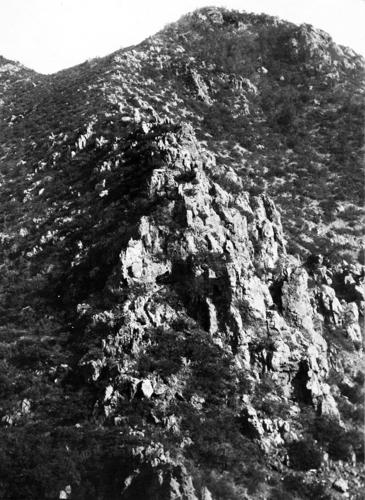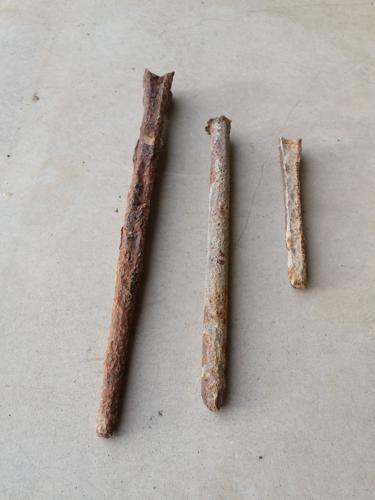The Palmetto-Harshaw mining district in the northwest corner of the Patagonia Mountains drew the attention of the Spaniards, who sought to acquire silver slabs and nuggets hidden below the surface rubble in the canyons, gulches and gullies.
Floodwaters historically moved weathered gold-bearing quartz into washes from heavily mineralized strike zones. While these placer deposits proved enticing, hardrock mining became more prevalent by the early 20th century.
A historic sulfide copper deposit, the Three R Mine, located 4.5 miles southwest of Patagonia, worked since the 1890s. It had multiple owners and lessees, including Col. William C. Greene, copper baron of Cananea, the Lewisohn brothers, the Calumet & Arizona Mining Co., and the Three R syndicate.
The property derived its name from Rollin R. Richardson, who along with the Calumet & Arizona Mining Co., shipped high-grade copper ore averaging 10 percent to the El Paso smelter between 1909 and 1912. N. L. Amster from Boston acquired the property for $550,000, shipping 30,600 tons of copper ore valued at $1 million by 1914.
Early returns from fissure veins included a small tonnage of high-grade chalcocite ore and chalcopyrite disseminated throughout granite.
Miners exploited the veins using hand-driven adits, personally sorting through the material.
Tools of the trade consisted of simple steels and hand sledges. The single jacking method applied to a sole miner, who used one hand to hold and turn the steel drill while pounding it with his hammer in the other hand. The double jacking method involved one miner holding and working the steel drill while one or two other miners swung the hammer.
Burros had been previously used to haul the ore down 5,500 feet of steep mountain grade. The ore was then hauled by wagon 3 miles to Bloxton, a station on the Benson-Nogales branch of the Southern Pacific Railroad. A mountain road was later established, enabling more efficient ore transport.
A combination of enhanced technology and profits allowed the mine to use compressors, machine drills and power plants to improve productivity. Carbide lamps replaced hand-held candles below the surface. High-grade ore exceeding 15 percent attracted investors’ capital.
Magma Copper Co. optioned the property during the 1920s, conducting extensive diamond drilling, including 10 holes to block out ore while extending the underground works. A mill was also erected on-site. By 1930, the mine’s production reached $2.5 million, and was credited with 10 million pounds of copper and $65,000 worth of silver from 21 patented and 11 unpatented claims in a solid contiguous block. Kennecott Copper Corp. became involved in sampling ore at the site during the 1940s.
By 1956, the year of the mine’s last production, 130,000 tons of ore averaging 4 percent copper was mined, along with gold, silver, lead and zinc. Ore was smelted by Asarco for a limited time, but soon ceased because of its excessive alumina content. The Three R Mine also had a notable alunite deposit consisting of pinkish alunite and quartz. Alunite has been utilized in the potassium-argon (K-Ar) isotopic dating method of weathering processes in ore deposits.
Diamond drilling commenced at the site in 1960, with the use of a Chicago Pneumatic diamond drill capable of drilling 500 feet in depth. Workings of the Three R Mine include a 1,000-foot and 3,000-foot adits, three tunnels and a 558-foot shaft, along with 20,000 feet of workings.
Anaconda and Asarco had an initial interest in the mine. However, after extensive exploration, it became apparent by the early 1980s that both the Evening Star and Colossus claims were “mined out,” meaning their potential yield was too little for a profitable return on investment.
In 2003, the property was evaluated by Mercator Minerals, Ltd. for a possible in-situ leach project. Historically, the mine was known as being the only self-sustaining copper producer in Santa Cruz County that did not have to rely on silver profits.






